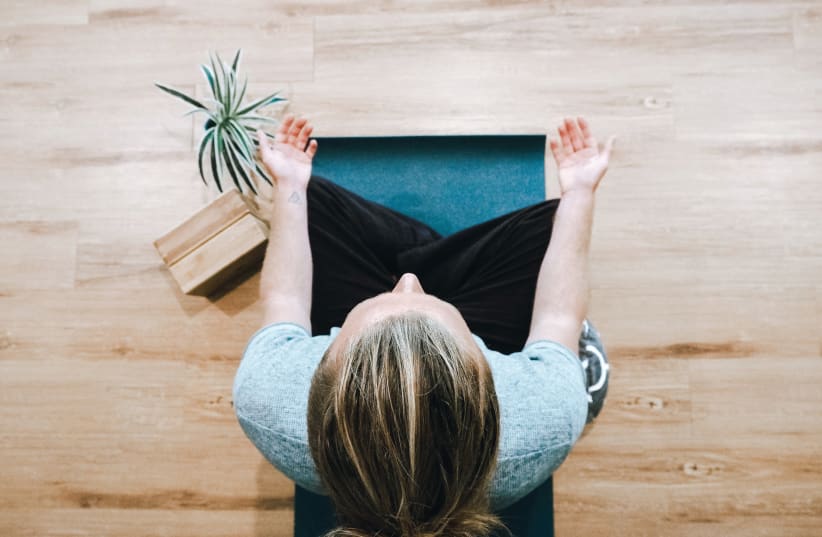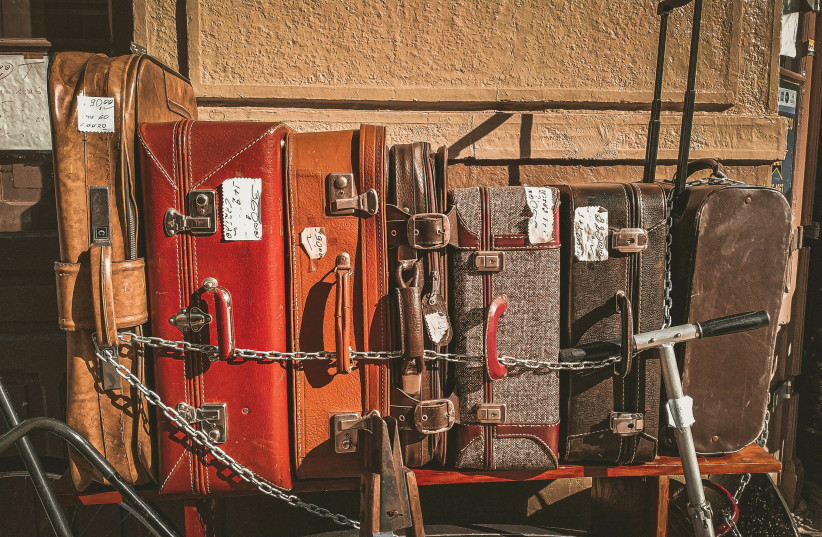On the seventh day of Passover, according to the Midrash, Jews celebrate the crossing of the Red Sea after being liberated from slavery in Egypt.
The Children of Israel were standing at the Red Sea when they saw the Egyptian forces approaching on chariots. They cried out in panic and asked if they were taken out of slavery because there were no graves in Egypt: “Is it better for us to serve the Egyptians than to die in the wilderness?” they asked. (Exodus 14:12)
They had been enslaved in Egypt for 430 years and even though they had achieved their freedom, they still brought along their baggage of past experiences of passivity, timidity, and dependency on their masters for sustenance. They didn’t “need” these qualities anymore now that they were free, and yet they continued to cling to the mindset of slaves. They sought safety in what felt familiar.
In our own lives, we often cling to things that don’t serve us well, such as bad habits and negative experiences. When it comes to experiences from the past, all we can do is accept whatever it is we’re holding on to and then work on letting it go. That’s how to bring about growth and change.
Some people have trouble letting go of their pain or other unpleasant emotions about their past because they think those feelings are part of who they are. Painful feelings can be familiar and comfortable, especially if they’re all you know.
Psychoanalyst Carl Jung said, “I am not what happened to me, I am what I choose to become.”
But it’s not so simple.
The past and the present get mixed up in our minds.
One way to notice and distinguish between our current experiences and past thoughts or emotions is by practicing mindful meditation, which helps us connect more deeply with the present moment.
Mindfulness is like a spotlight on your awareness in the present moment.
When we meditate, we notice how thoughts, sensations, and events are dynamic and fleeting. This gives us more freedom to choose how to react in the present moment and encourages us to react less automatically.
Mindfulness involves releasing attachment to our thoughts and emotions, rather than becoming entangled in them and seeing them as personal traits.
When we stop trying to hold on to these thoughts or feelings from the past, or whatever doesn’t serve us well, we actually become freer to live in peace.
To release whatever we’re holding onto, we can practice letting go, by tuning into our bodies and consciously inviting a gentle release of the things we want to let go of.
Body scan: A mindfulness practice to help let go
One way to explore this idea of letting go is the mindfulness practice of the body scan.
As you scan different areas of your body and observe the physical sensations, thoughts, or feelings, take a few breaths and imagine softening and letting go.
Letting go is a practice of acknowledging what we’re feeling, and also surrendering what no longer serves us. It invites us to connect to the present moment by giving attention to and observing the body and the mind. This can bring some ease and release of what is weighing on us.
Let’s try a short body scan to release or let go of what lies heavy on our minds and hearts.
Begin by getting settled into a comfortable position, either seated or lying down.
CLOSE YOUR eyes if you like, and notice the contact that your body makes with the surface that supports you– such as the chair, cushion, or mattress.
- Take a few conscious breaths, allowing your body to sink into the surface that supports you. Pause briefly, then notice the air as it enters your nose and as it leaves your nose or mouth.
- Notice the movement of your chest as you breathe, and also notice the rise and fall of your stomach as you breathe in and breathe out. Pause again.
- Gently scan your body for any sensations such as tension, tightness, heaviness, warmth, or tingling. Take some time to check in with your body, and then pause again.
- Imagine directing your breath to an area or areas in your body with a sensation or sensations (pause).
- Notice your mind right now – is it alert, distracted, bored, relaxed, or something else?
- Pay attention to your thoughts – especially the thoughts that might be automatic and self-critical.
- Is there a thought that you could let go of right now? A thought that doesn’t serve you or is holding you back? Is this thought true? Does this thought help you?
- Imagine that with every out-breath you are slowly releasing this thought (Pause).
- Notice any reactions of resistance to letting this thought go.
- Notice if there are feelings of lightness or freedom.
- Shift your attention to your heart and the area around the heart.
- Breathe towards this area and notice whatever feelings or sensations are coming up right now, and then pause again.
- Then imagine releasing whatever is making your heart heavy right now – such as worry or regret.
- Breathe freely, and then notice any sensations of lightness. Can you smile at yourself and appreciate the effort you’re making to live more with ease and let go of the things that burden you?
- When you’re ready, bring your attention back and slowly open your eyes if they are closed. Consider making an intention to do this practice regularly.
THE JEWISH major holidays are also connected to the agricultural cycle. In spring, we plant our crops and are filled with hope and the possibility of a new beginning. “Remember this day that you are leaving Egypt... today you are leaving in the month of the spring. When you come to Israel, keep this custom in this month.” (Ex.13:3-6 and Deut. 16:1)
Spring is a time for renewal and potential growth. A seed can’t stay a seed forever. When cared for with nourishing soil, rays of sunlight, and drops of water, the seed changes shape and starts to become whatever it is meant to be.
What are you clinging to that doesn’t serve you well?
Just like planting a seed, it takes time and patience to make something grow.
The Jewish people’s journey to nationhood began with the seed of freedom planted at the Red Sea.
Now is the time for us to plant our own seeds of freedom. ■
The writer is a psychotherapist and certified mindfulness-based stress reduction instructor. She leads mindfulness workshops and courses in Jerusalem. The next course is starting on June 4. To listen to a guided body scan or get in touch, go to her website: mindfulnesswithsusie.com/courses/about-the-mindfulness-course

